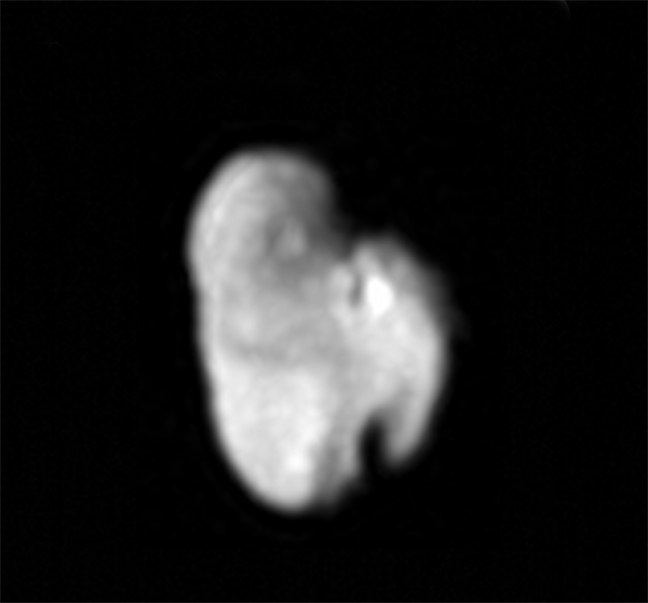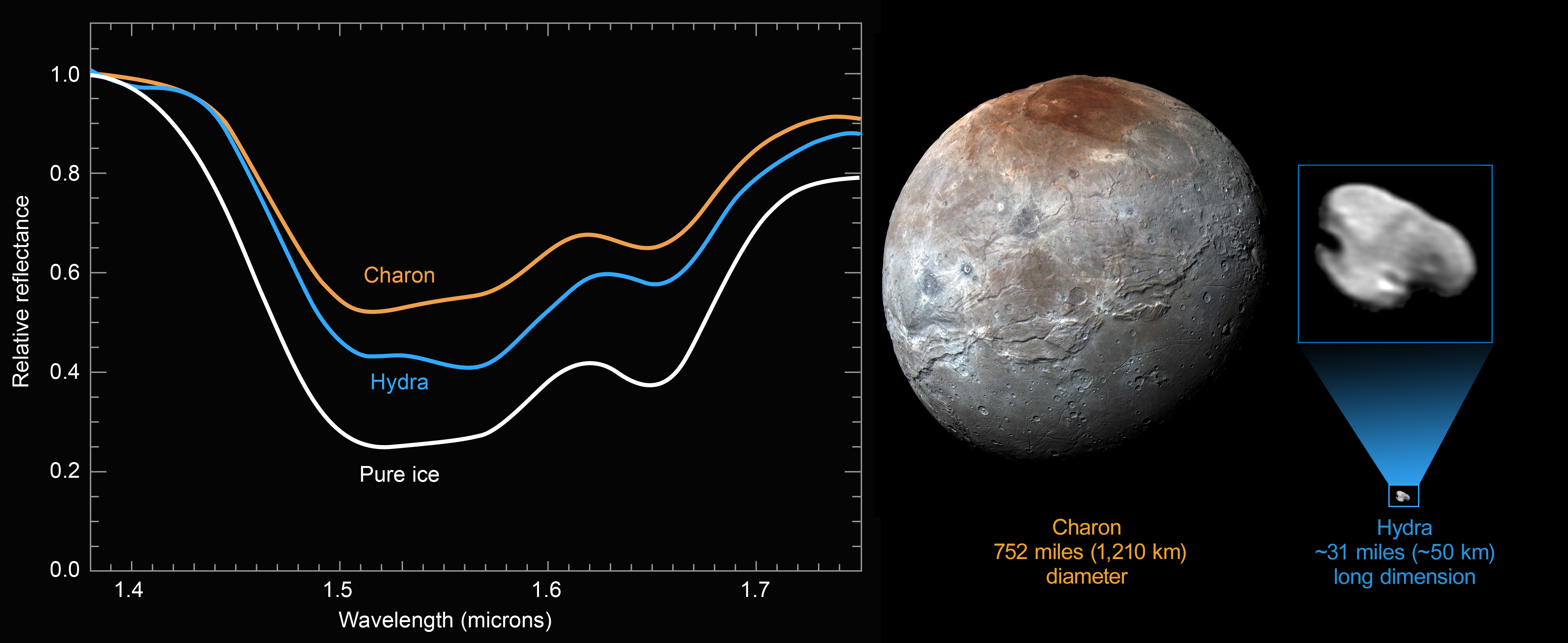Pluto's Moon Hydra Sheathed in Ultraclean Water Ice

Pluto's outermost moon, Hydra, was named for a legendary Greek water monster, and it's living up to its name: New data show that the little moon is almost entirely covered in "nearly pristine" water ice, NASA officials say.
The new data from the New Horizons spacecraft, collected during its July 2015 flyby of Pluto, suggest that the planet's icy shell is cleaner than the ice found on Pluto's other moons.
The incredible purity of the ice on Hydra helps to explain the high reflectivity that scientists noticed from earlier New Horizons data, NASA officials said. Those earlier observations of Hydra found that its surface is extremely reflective — even more so than the surface of Pluto's largest moon, Charon. Although Charon is also covered in water ice, it's contaminated with darker material that has accumulated over time on the surface, making Charon less reflective, according to NASA. (The researchers call the substance "water ice" to distinguish it from more exotic ices, such as the crystallized nitrogen that flows on Pluto's surface.)
The ice on Hydra's surface seems to either have larger grains or reflect more light at certain angles than the ice grains on Charon, based on the wavelengths of light it absorbs, NASA officials said in a statement.

Scientists theorize that Hydra formed from icy debris produced when two celestial bodies collided to form the Pluto-Charon system about 4 billion years ago and their water-heavy outer layers were stripped away.
Next, NASA researchers will investigate why Hydra's ice is cleaner than Charon's. One theory they've proposed is that small meteorite collisions may continually hit Hydra and blast away the contaminants that taint Charon's ice.
Get the Space.com Newsletter
Breaking space news, the latest updates on rocket launches, skywatching events and more!
"This process would have been ineffective on the much larger Charon, whose much stronger gravity retains any debris created by these impacts," Simon Porter, a New Horizons science team member from the Southwest Research Institute in Boulder, Colorado, said in the statement.
With more data rolling in from New Horizons, scientists will soon have the chance to compare Charon to Hydra directly, and also compare those two moons to Pluto's other small moons.
Editor's Note: This article was updated to reflect how long ago the Pluto-Charon system formed.
Follow Kasandra Brabaw on Twitter at @KassieBrabaw. Follow us @Spacedotcom, Facebook and Google+. Original article on Space.com.
Join our Space Forums to keep talking space on the latest missions, night sky and more! And if you have a news tip, correction or comment, let us know at: community@space.com.

Kasandra Brabaw is a freelance science writer who covers space, health, and psychology. She's been writing for Space.com since 2014, covering NASA events, sci-fi entertainment, and space news. In addition to Space.com, Kasandra has written for Prevention, Women's Health, SELF, and other health publications. She has also worked with academics to edit books written for popular audiences.









